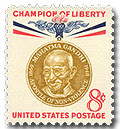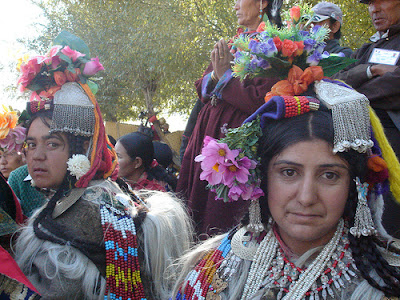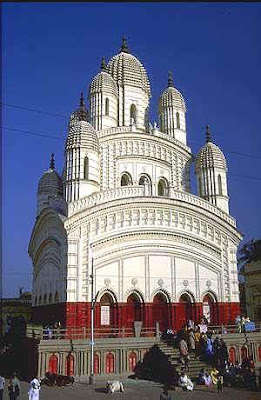Mind on Myanmar ----Body in Leh, Ladakh, J&K India At left is a photo of my friends, some Burmese monks now studying in New Nalanda University, Bihar. Although Buddhism has not been a majority religion in India for about 1000 years, India remains a centre of Buddhist learning. These Burmese monks have come to study the sacred, ancient Pali language here.
At left is a photo of my friends, some Burmese monks now studying in New Nalanda University, Bihar. Although Buddhism has not been a majority religion in India for about 1000 years, India remains a centre of Buddhist learning. These Burmese monks have come to study the sacred, ancient Pali language here.
Thoughts of the brave monks and civilians still in Burma, who are being killed while protesting the Burmese junta, are on my mind. This is the only Burma-related photo I have. All the banks, schools and government offices are closed here today. It's Gandhi Jayanthi, or Mohandas K. "Mahatma" Gandhi's birthday - a major national holiday throughout India. Gandhi is revered throughout India for obvious reasons, but especially in Buddhist areas for his commitment to non-violence (his photo is up in shoppes all over Dharamsala, next to the Dalai Lama's). Ahimsa or non-violence (including vegetarianism) is a central concept in Buddhism, first developed
by the Jains, and later adopted by some Hindus. Jains were especially prominent in Gandhi's homestate of Gujarat and it is believed they were a great influence on his philosophy.
There have been several recent attempts to malign Gandhi's saintly image by "telling  the truth" about his personal life and relations with his family. Who cares - the guy never claimed to be a saint (that was thrust upon him, as was his role in Indian history - read the bio, he just wanted to be a middle class lawyer) and no one is perfect. Nor need they be. The bottom line (as with Dr. Martin Luther King Jr., who was later shown to have had affairs and such) is, "is the world generally a better place because of this person?" Who could answer "no"? (by the way, if your answer is "no," for either one, please do not write to me. I mean it.)
the truth" about his personal life and relations with his family. Who cares - the guy never claimed to be a saint (that was thrust upon him, as was his role in Indian history - read the bio, he just wanted to be a middle class lawyer) and no one is perfect. Nor need they be. The bottom line (as with Dr. Martin Luther King Jr., who was later shown to have had affairs and such) is, "is the world generally a better place because of this person?" Who could answer "no"? (by the way, if your answer is "no," for either one, please do not write to me. I mean it.)I think a lot of modern Indians have a great need to show how "modern," "progressive" and irreligious they are by knocking down sacred cows and icons. Perhaps I would feel the same if I had grown up in such an icon-worshipping, hierarchical environment. I saw the same stuff happen at the Dalai Lama press conference in Andhra Pradesh. Wow, I sure was impressed with the "impartiality" those commie "reporters" (propagandists) showed by being disrespectful and rude to the Dalai Lama! Really demonstrated open-mindedness and progressive thinking!
Reactionary is reactionary - regardless of the direction in which you're reacting.
Burma bummerHowever, I digress. Today's headlines were - I hate the word ironic, it is so overused. I'll just say the headlines regarding the situation in Burma (Myanmar) would be horrifying on any day, but especially today.Hundreds killed, thousands arrested (includes photo of dead monk floating in river)
In photos: Burma crackdown (mostly shots of blocked city streets - looks like Kathmandu)
photos from Flickr members in Burma nowBurmese monks "to be sent away" to distant mass prisonsSatellite imagery shows Burmese plightLosing hope inside a Burmese monasteryOkay, I'm going to say
one last thing regarding armchair critics of Gandhi, King, HH the Dalai Lama, whoever. Actually, Teddy Roosevelt (26th US President) is going to say it.
“It is not the critic who counts; not the man who points out how the strong man stumbles, or where the doer of deeds could have done them better. The credit belongs to the man who is actually in the arena, whose face is marred by dust and sweat and blood, who strives valiantly; who errs and comes short again and again; because there is not effort without error and shortcomings; but who does actually strive to do the deed; who knows the great enthusiasm, the great devotion, who spends himself in a worthy cause, who at the best knows in the end the triumph of high achievement and who at the worst, if he fails, at least he fails while daring greatly. So that his place shall never be with those cold and timid souls who know neither victory nor defeat.”
 with no electricity (only a bit of solar power), no running water, no roads, only composting toilets, no stores or commercial enterprises, no use for cash money, no hotels and no telephones? Have I got a hamlet for you!
with no electricity (only a bit of solar power), no running water, no roads, only composting toilets, no stores or commercial enterprises, no use for cash money, no hotels and no telephones? Have I got a hamlet for you! 















